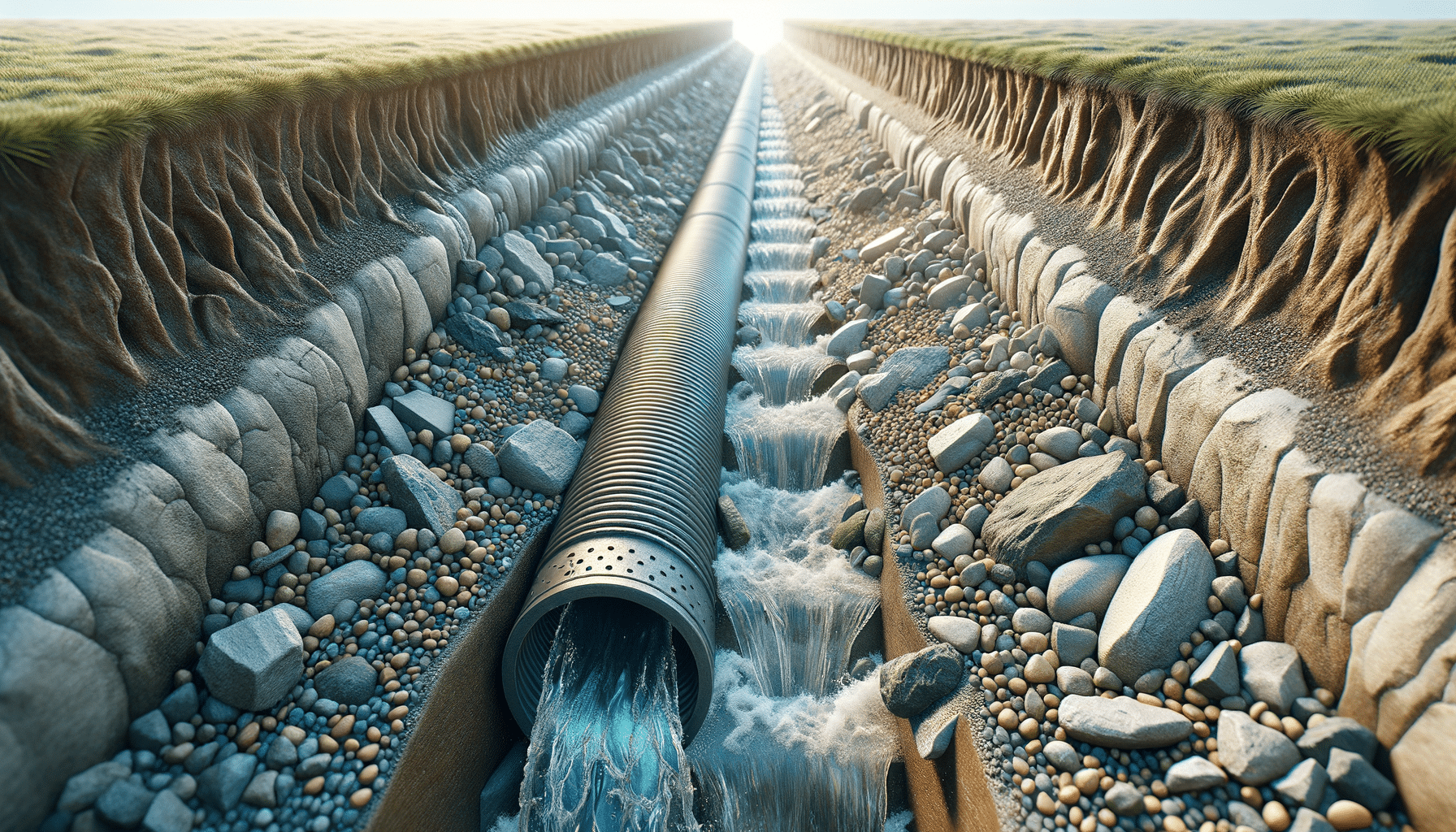
Understanding French Drains: A Comprehensive Guide
Introduction to French Drains
When it comes to managing water drainage and preventing water damage in residential and commercial properties, French drains are a practical solution. These systems are designed to redirect water away from structures, reducing the risk of flooding and water-related issues. Understanding how French drains work and their importance can help homeowners and property managers make informed decisions about their drainage systems.
French drains are essentially trenches filled with gravel or rock, containing a perforated pipe that redirects surface and groundwater away from an area. They are particularly useful in areas with poor drainage or where water tends to accumulate, such as basements, yards, and near foundations. By efficiently channeling water away, French drains help maintain the integrity of buildings and landscapes.
Components and Installation of French Drains
The installation of a French drain involves several key components that work together to ensure effective water management. The main components include:
- Trench: A trench is dug to the required depth and width, depending on the specific drainage needs.
- Gravel or Rock: The trench is filled with gravel or rock, which aids in water filtration and supports the pipe.
- Perforated Pipe: A perforated pipe is placed in the trench to collect and redirect water.
- Fabric Liner: A fabric liner may be used to prevent soil and debris from clogging the pipe.
Proper installation is crucial for the effectiveness of a French drain. The trench should have a slight slope to facilitate water flow, and the pipe must be correctly positioned to ensure optimal drainage. Additionally, the choice of materials, such as the type of gravel and pipe, can impact the system’s performance and longevity.
Benefits of Implementing French Drains
French drains offer several advantages that make them a popular choice for water management. Some of the key benefits include:
- Preventing Water Damage: By efficiently redirecting water away from structures, French drains help prevent water damage to foundations, basements, and landscapes.
- Reducing Soil Erosion: Proper drainage reduces soil erosion, preserving the integrity of landscapes and preventing damage to gardens and lawns.
- Enhancing Property Value: Well-maintained drainage systems can enhance property value by ensuring a dry and stable environment.
- Versatility: French drains can be customized to suit different environments and drainage needs, making them versatile for various applications.
Overall, the implementation of French drains can lead to significant long-term savings by minimizing the risk of costly water damage repairs and maintenance.
Common Applications of French Drains
French drains are versatile systems that can be used in a variety of settings to address specific drainage issues. Some common applications include:
- Basement Waterproofing: French drains are often installed around the perimeter of basements to prevent water seepage and flooding.
- Yard Drainage: In areas with poor natural drainage, French drains can help manage excess water in yards and gardens, protecting plants and preventing waterlogging.
- Foundation Protection: By directing water away from building foundations, French drains help maintain the structural integrity of homes and commercial buildings.
- Driveway Drainage: French drains can be installed along driveways to prevent water accumulation and reduce the risk of damage to vehicles and surfaces.
The adaptability of French drains to different environments and needs makes them a valuable tool in effective water management strategies.
Challenges and Considerations in French Drain Installation
While French drains are highly effective, there are challenges and considerations that must be taken into account during installation and maintenance. Some of these include:
- Clogging: Over time, debris and sediment can accumulate in the drain, leading to clogs. Regular maintenance and inspection can help prevent this issue.
- Proper Slope: Ensuring the correct slope for the trench is essential for optimal water flow. Inadequate slope can result in water pooling and reduced effectiveness.
- Material Selection: The choice of materials, such as the type of gravel and pipe, can impact the system’s performance and durability.
- Local Regulations: Compliance with local regulations and building codes is crucial to avoid legal issues and ensure safe installation.
Addressing these challenges through careful planning and professional installation can help maximize the benefits of French drains and ensure long-term functionality.


